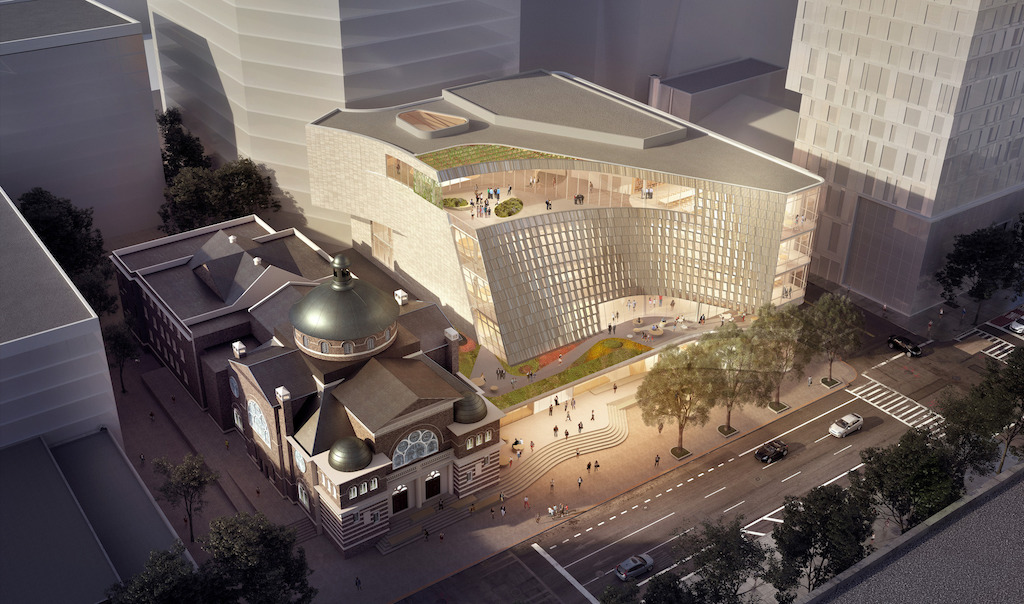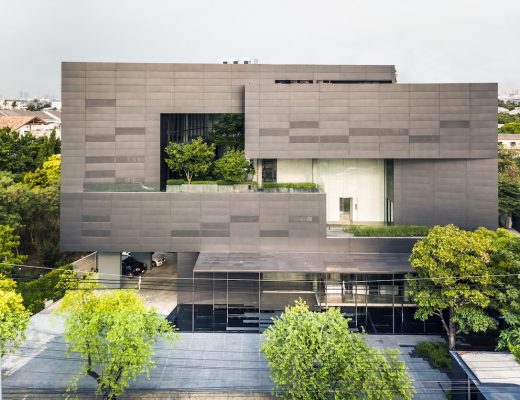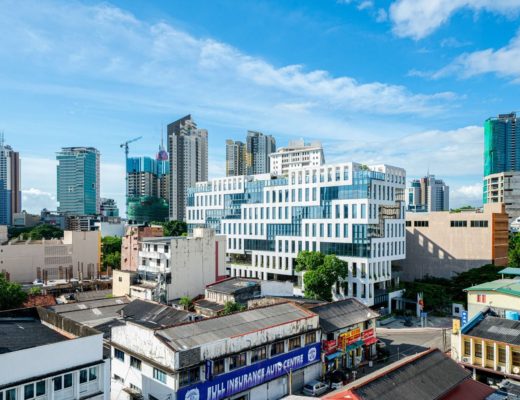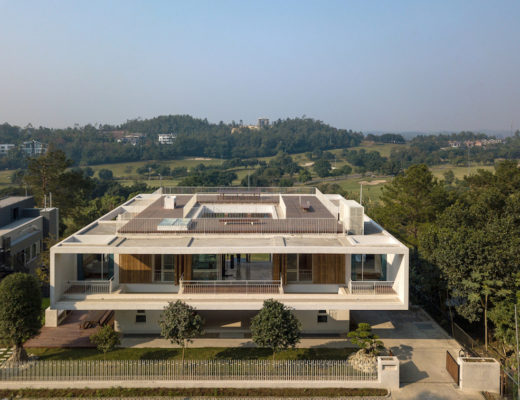Designed by Snøhetta in collaboration with Clark Nexsen, the new main library of Charlotte Mecklenburg Library reinterprets the space through a technologically-advanced approach and highlights the importance of this function in the community’s daily life.

The public entity spreading over 1,074m², “is a significant investment in a culture of making, thinking, and doing that is deeply tied to its people and its place”. Located at the intersection of two main arteries, at the centre of a rapidly changing area, the main library “has undergone several transformations during its 116-year history and remains a vital institution to the community. However, in its current incarnation, the building no longer supports the breadth of its programmatic ambitions and the changing needs and role of the contemporary library”.
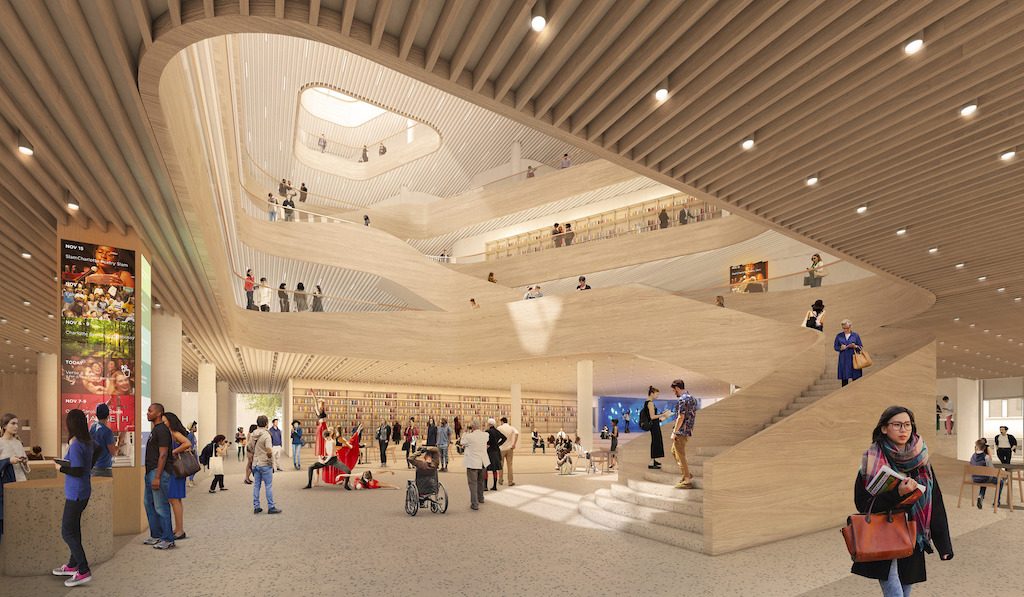
The project imagined by Snøhetta in collaboration with Clark Nexsen, an ideas-based architecture and engineering firm focusing on creating spaces and experiences that positively impact people’s lives, was inspired by the site’s topographical history. In fact, the concept revolves around ridgelines literally and figuratively. The new intervention generates views in a variety of directions and is a convergence point for community and culture. The architects state that the revitalised main library, Charlotte’s new public commons and knowledge centre, “creates a bridge between the past, present, and rapidly evolving future of Charlotte, reconceiving how the Library connects to people and everyday life”.
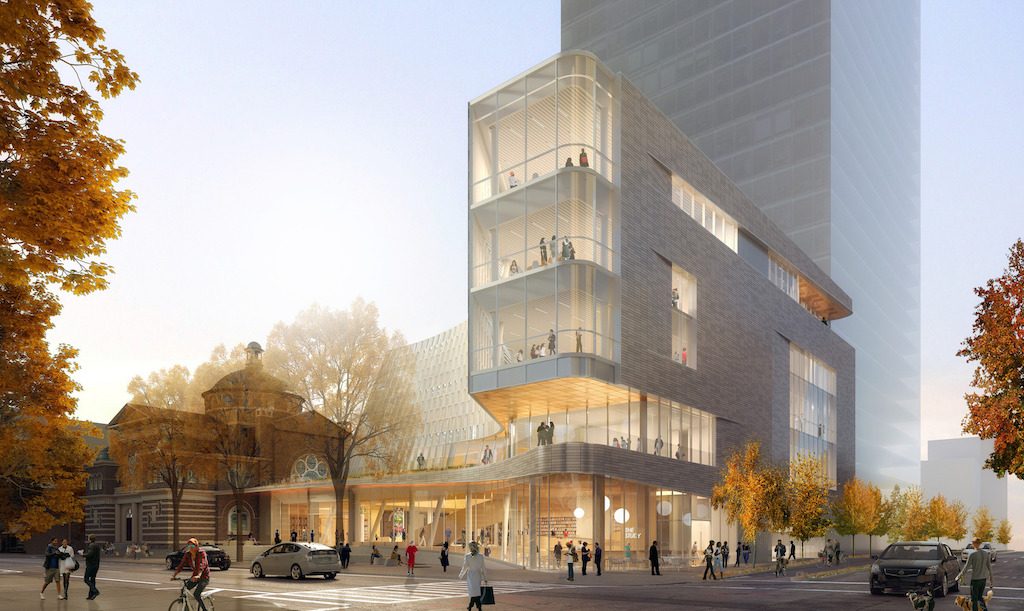
“At street level, the façade is glazed in a transparent band of glass that wraps the tapered corner, allowing views deep into the library and its activity. A glowing copper soffit frames the new main entrance on Tryon Street, inviting visitors in under its welcoming canopy. Within, there is an open lobby space with the potential to be connected to the historic McGlohon Theatre and Duke Energy Theater next door to form a new civic space. At the rear, a new mid-block plaza activates additional sides of the building for the public to engage with and the surrounding public realm. Above the glass podium, the library pulls back on its theatre-side to reveal McGlohon’s western face, previously hidden in a narrow alley. The sloped wall of the Tryon façade is clad in ceramic panels inspired by North Carolina’s rich history of earthenware and artisanry. Evoking a screen, or a patterned textile, the façade is strategically perforated to modulate light conditions within, says a spokesperson on behalf of both the firms.”

Basing their approach on the flexibility and diversity of the spaces and activities, the architects created a five-storey building, “with a glowing, translucent prow that cantilevers out over the sidewalk, opening itself up to the street”. Programmes offered include job training and counselling, a resource and welcome centre for new Mecklenburg residents, and the celebrated Carolina Room, which holds an archive of rare books and artifacts on the history of North Carolina. An atrium within the library inspires the visitors to move upwards, tracing a wooden stair, and discovering the unique views of the city.
Architecture Public Institution

